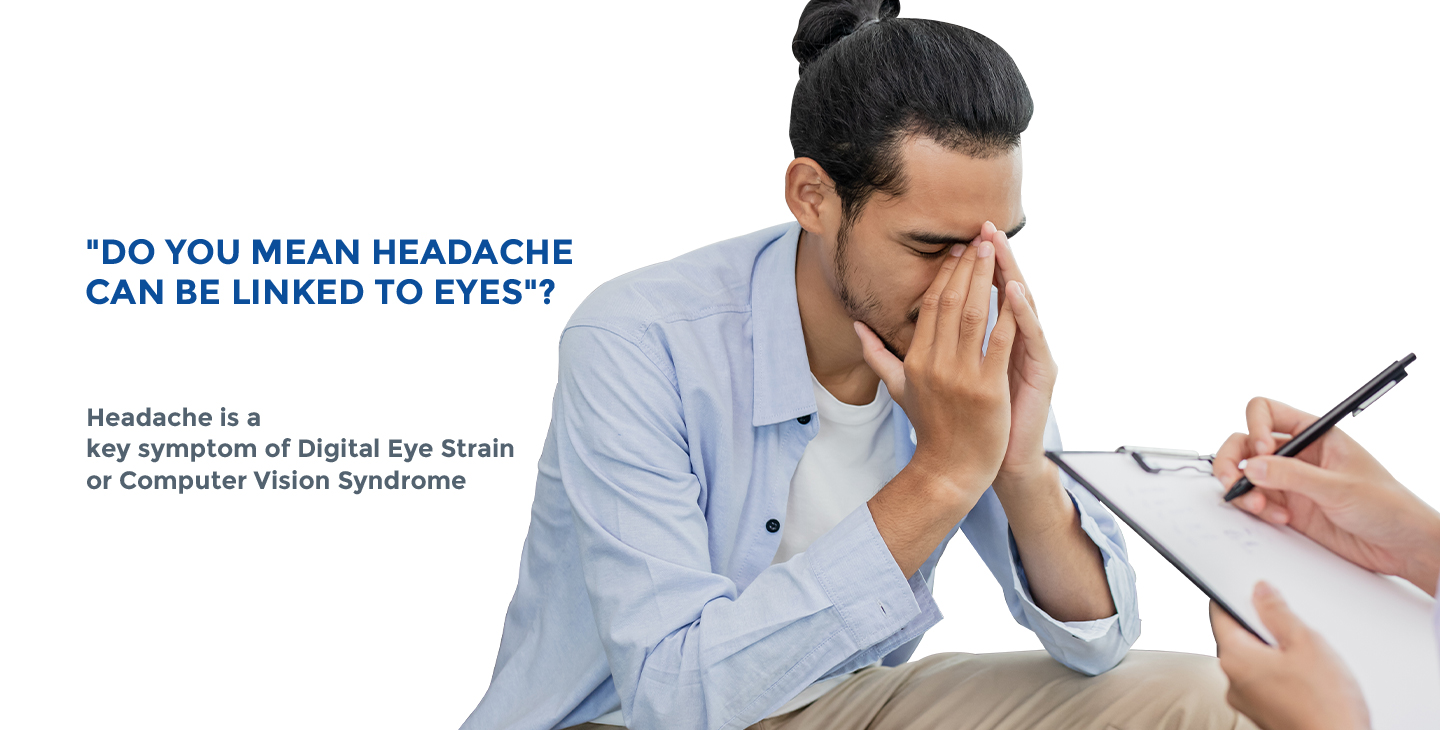
 Computer vision syndrome
Use of digital media is rising across all age groups. More and more people are spending increasing amount of time on mobile phones, laptops and desktops.
It is estimated that close to 3 billion people use internet globally. India has about 500 million people on internet in urban and rural areas together. The number of internet users is growing at the rate of 10-12%.
Research has shown that 50-70% of people, who have a screen time of more than 3 hours at a stretch, will have eye related problems. Computer vision syndrome (cvs) or digital eye strain (des) is a group of eye problems caused by over use of digital media.
Symptoms of cvs or des
Computer vision syndrome
Use of digital media is rising across all age groups. More and more people are spending increasing amount of time on mobile phones, laptops and desktops.
It is estimated that close to 3 billion people use internet globally. India has about 500 million people on internet in urban and rural areas together. The number of internet users is growing at the rate of 10-12%.
Research has shown that 50-70% of people, who have a screen time of more than 3 hours at a stretch, will have eye related problems. Computer vision syndrome (cvs) or digital eye strain (des) is a group of eye problems caused by over use of digital media.
Symptoms of cvs or des
with a minimum size of 11 inches
as a web browser
for measurement and calibration
Working knowledge to set up & call
BYNOCS is registered trademark of Kanohi Eye Private Limited. BYNOCS software is copyrighted product of Kanohi Eye Private Limited with all Rights Reserved. 2020
Necessary cookies are absolutely essential for the website to function properly. These cookies ensure basic functionalities and security features of the website, anonymously.
| Cookie | Duration | Description |
|---|---|---|
| cookielawinfo-checkbox-analytics | 11 months | This cookie is set by GDPR Cookie Consent plugin. The cookie is used to store the user consent for the cookies in the category "Analytics". |
| cookielawinfo-checkbox-functional | 11 months | The cookie is set by GDPR cookie consent to record the user consent for the cookies in the category "Functional". |
| cookielawinfo-checkbox-necessary | 11 months | This cookie is set by GDPR Cookie Consent plugin. The cookies is used to store the user consent for the cookies in the category "Necessary". |
| cookielawinfo-checkbox-others | 11 months | This cookie is set by GDPR Cookie Consent plugin. The cookie is used to store the user consent for the cookies in the category "Other. |
| cookielawinfo-checkbox-performance | 11 months | This cookie is set by GDPR Cookie Consent plugin. The cookie is used to store the user consent for the cookies in the category "Performance". |
| viewed_cookie_policy | 11 months | The cookie is set by the GDPR Cookie Consent plugin and is used to store whether or not user has consented to the use of cookies. It does not store any personal data. |
Functional cookies help to perform certain functionalities like sharing the content of the website on social media platforms, collect feedbacks, and other third-party features.
Performance cookies are used to understand and analyze the key performance indexes of the website which helps in delivering a better user experience for the visitors.
Analytical cookies are used to understand how visitors interact with the website. These cookies help provide information on metrics the number of visitors, bounce rate, traffic source, etc.
Advertisement cookies are used to provide visitors with relevant ads and marketing campaigns. These cookies track visitors across websites and collect information to provide customized ads.
Other uncategorized cookies are those that are being analyzed and have not been classified into a category as yet.